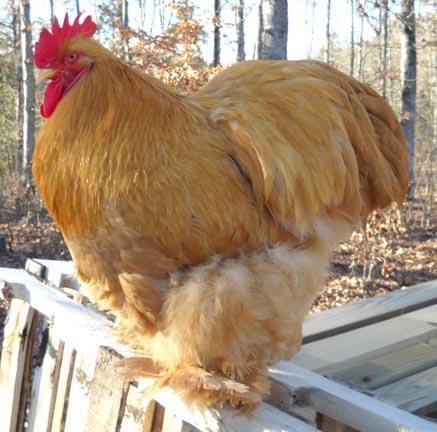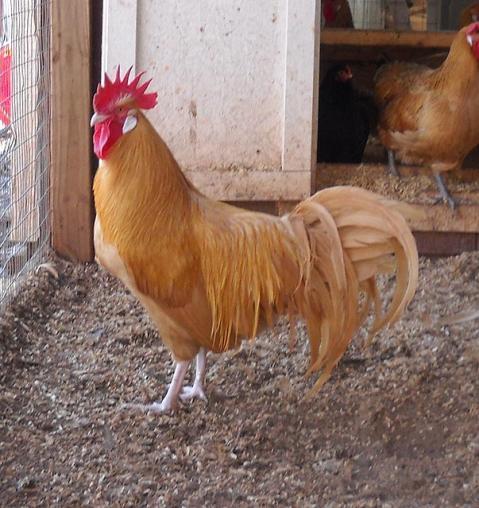So what is the correct shade of Buff? I prefer a rich golden Buff...almost an orange. Please post your thoughts and photos. Lets not argue, but discuss what is the correct shade of Buff. Any breed is fair game. However, lets stick with just the color Buff. Buff chickens, Buff bantams, Buff ducks, Buff geese, Buff turkeys, Buff guineas etc.
We will start with an article by Tom Roebuck and a drawing by Diane Jacky that was originally made for the Standard of Perfection.
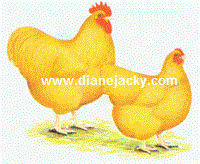
From the Standard of Perfection:
PLUMAGE: Surface throughoutand even shade of rich golden buff.
Male -- head, neck, hackle, back, wing bows and saddle showing greater luster.
Female hackle, some luster.
Undercolor matching surface as near as possible.
Definition of Buff: A medium shade of orange-yellow color with a rich golden cast; not so intense as to show a reddish cast, nor so pale as to appear lemon or light yellow. The term is generally used in referring to the plumage color of all Standard Buff varieties of poultry.
Other BYC threads on Buff colored poultry:
Breeding Buff Leghorns https://www.backyardchickens.com/forum/viewtopic.php?id=295163
Post Pics Of Orps/ Orpingtons HERE (For all colors of Orpingtons) https://www.backyardchickens.com/forum/viewtopic.php?id=259995&p=1
We will start with an article by Tom Roebuck and a drawing by Diane Jacky that was originally made for the Standard of Perfection.

From the Standard of Perfection:
PLUMAGE: Surface throughoutand even shade of rich golden buff.
Male -- head, neck, hackle, back, wing bows and saddle showing greater luster.
Female hackle, some luster.
Undercolor matching surface as near as possible.
Definition of Buff: A medium shade of orange-yellow color with a rich golden cast; not so intense as to show a reddish cast, nor so pale as to appear lemon or light yellow. The term is generally used in referring to the plumage color of all Standard Buff varieties of poultry.
Other BYC threads on Buff colored poultry:
Breeding Buff Leghorns https://www.backyardchickens.com/forum/viewtopic.php?id=295163
Post Pics Of Orps/ Orpingtons HERE (For all colors of Orpingtons) https://www.backyardchickens.com/forum/viewtopic.php?id=259995&p=1
So what is the correct shade of Buff?
Article is written by Tom Roebuck
I will focus on what I look for in color for the majority of this article and touch on a few other aspects that should not be overlooked later on. The APA Standard of Perfection defines Buff as: A medium shade of orange-yellow color with a rich golden cast; not so intense as to show reddish cast, nor so pale as to appear lemon or light yellow. The ABA Bantam Standard defines Buff as: An intermediate shade of orange yellow with a rich golden cast, not so intense as to show a reddish tinge, nor so blanched as to resemble lemon or light yellow. I find neither of these is all that definitive, and they leave it up to the reader to determine their own version of the correct shade of Buff. The shade of Buff that you wind up breeding is sort of a personal preference. Some like a more orange Buff, bordering on a reddish tone and others like the lighter lemony color. I would argue that neither of these are the correct shade of Buff as defined in our standards and each of these extremes bring with them their own set of color problems. The darker orange Buff resulting in a bird with uneven color especially in the shoulder, hackle and saddle, and also prone to black streaking in the tail, while the lemon Buff will promote white in the primaries, undercolor, feather shafts, cotton fluff in the tail, and white foot feathers in Cochins. It is possible to get an evenly shaded lemon Buff top color in a bird, but invariably that bird falls apart when further critiqued in these areas mentioned.
So what is the correct shade of Buff? I know what my preference is, and Ive fashioned it after the color of some bantam Buff Cochins that I saw when I was a teenager. That was almost 30 years ago so the color that I saw then had a lasting impression. I was not fortunate enough to have met Marcus Davidson, or have seen any of his birds in person, but these Bantam Buff Cochins, were said to have been his bloodline, and the color was amazing. My preferred shade of Buff is a deep, rich Buff that reminds you of a 24 karat Gold watch, not bright and shiny, where light bounces off of it, but a rich tone that carries an inherent radiance which appears to absorb the light and gives off its own golden glow. While this may seem a silly way to describe the color of a chicken, I suggest that you take a moment to examine the classes of Buff colored birds at the next show you go to and see if any of the tones jump out at you. Its kind of neat when I think Ive got the color about right on one of my birds to take it out into the sun and have a look. Sunlight shows up all the flaws in the Buff color. It also destroys Buff color if the birds are subjected to direct sunlight every day. The bleaching effect of the sun will ruin a nicely shaded Buff bird in a few short days. It would seem that my description would most apply to male birds because their hackles and saddles are more pronounced and shinier by design, but a female Buff bird that is correct in color will also give off that radiance I spoke of.
Keeping rich, golden Buff as my end state goal; and its important for me to note that this applies to each breed of Buff colored bird that I raise, I set up my breeding pens with birds that complement each other as best as possible. You should not breed Buff colored birds with extreme variances in shades of Buff; that is a dark male to a light female. Likewise I would warn against using a male that is uneven from hackle to shoulder/wing bay, to saddle and tail. While its not always possible to have an absolutely even shaded male, I try not to use a bird that isnt even. When selecting a female to go with a male I attempt to match the overall color of the female to the breast color of the male. This was explained to me by Alex Duffy, when I first started showing and breeding Buff Cochin bantams in the early 80s. What youll note is that by using this practice you never wind up breeding two birds of extreme color differences together. As with any color or patterned variety it is not always possible to get exactly what you are looking for in color to put two birds together in a breeding pen, but get as close as you are able and go from there.
Perhaps my biggest pet peeve in the Buff color is undercolor and feather shaft color. I believe these two areas, combined have the most impact on the soundness of overall color and so I put a lot of emphasis on improving the undercolor of all my Buff breeds. Light shafts (shafting) in a Buff feather detracts from the overall appearance and impact of the color. It is most apparent in the female birds but the males show it too, you just have to look closer. I focus on the primary wing feather shaft color as a start. I look for the Buff shaft to run as far down toward the base of the feather as possible. The more Buff I can get in the primary shafts, the better the shaft color will be throughout the rest of the bird. As far as undercolor goes; the more the better. My goal is to be able to pull the feather back and have the undercolor be a nice rich Buff. If you have good undercolor in the hackle and breast, you are most likely to have good undercolor throughout the rest of the bird so those are the two places I definitely check when picking out breeders. Shafting and undercolor can be improved, but only through strict culling.
One of the other color flaws in Buff is cotton or white underfluff at the base of the main tail and tail coverts, which often shows through the top. What Ive found is that these particular feathers are often a reddish tone as opposed to Buff. I try not to use birds that have this defect either, but you really have to weigh the different parts of the bird against each other and determine which will best benefit or harm your breeding program. I can find something wrong with each and every one of my birds, and the trick is to match up a male bird in the breeding pen to offset the flaws of the female and vice versa. Easier said, than done.
The real key to making progress in any variety is culling. I am very strict when it comes to culling my Buff birds, and I start as early as possible. Some things are easy to cull for like comb flaws and crooked toes, but once you get a line established, these things dont show up as often so you have to be patient as the birds mature. In the Buff cockerels especially, one of the first things I can cull for is white in the wings. If a male bird is going to have white in its wings it will show up as the adult feathers are molting in. I cull these birds as soon as possible, which also alleviates any temptation to keep them because they have good type or something else I like. Another thing that Ive noticed is that if a chick has poor undercolor with its first full set of feathers, it doesnt get any better with age. If you are working on improving undercolor then your progress may take a few generations, but if you have pretty solid undercolor already established, poor undercolor can be eliminated early on. I do not have access to a small animal auction where I live, so my culls are destroyed. If I wouldnt use the bird in the breeding pen there is no reason to keep it and try to sell it to someone else. This brings me to another short point. I always look at birds I am thinking about adding to my flock from their potential as a breeder and never as a show bird. When I decide to add a bird from another breeders line, that bird will never see the show hall again, and my only intent for that bird is to add it to my breeding program because it has something that I think my line lacks.
Another interesting item that Ive noted is the difference in the shade of Buff from breed to breed. I stated above that my aim is to have the same tone of deep rich Buff in each Buff colored breed that I raise. However, its currently a work in progress with a couple of the lines I have. For instance, my Buff Leghorns are way too light in color for my liking, and while the females are very even in color, they carry poor undercolor and mealiness in the main tail feathers. So the challenge with these birds is to increase the richness of color but not lose the evenness from front to back on the birds. You cant do that in a single generation so here patience is the key. You have to do it a notch at a time. This light shade of Buff in the Leghorns produces males that have significant white in their main sickles and makes them unfit for show, and I would also say unfit for the breeding pen, but I have to caveat that a bit. The main sickles are some of the last feathers that a male bird gets in, so by the time you can see the white in these feathers youve already evaluated the type and other aspects of the bird. As type should always be the first attribute considered when choosing a breeder, you have to weigh the good against the bad and see if that particular male has enough merit to overlook the color flaw. However, in a side by side comparison with a second male, all things being equal aside from color, the male with sound color should be chosen for breeding over the other. Another thing to keep in mind is that a breeder does not always mean a show bird. I have absolutely no problem keeping a bird strictly for breeding, knowing that I will not ever show that bird. Some of them just dont have what it takes to make the show bench, but that doesnt mean its not right for your breeding program.
The intent of this article was to focus on Buff color, but the most important part of any breeding program is Breed type. You have to consider type first over color, and when evaluating the type of any bird you have to look at things like width of back and depth of keel, both in the males and the females. These two items play a significant role in determining the productivity and reproductive capability of your line. A narrow backed, shallow keeled bird is not the type of skeletal structure that you want to set in your line. I make a point to feel across the backs of all of my birds, Large and Bantam, as they are developing to check for good width, and good bone structure. The two standards provide a word picture of the body type for each breed, and its important to keep those word pictures in mind when selecting birds for your breeding pens. You have to build the barn before you can paint it, and all the paint in the world wont improve a poorly constructed barn. Type first, color second, cull hard and cull often.
Article is written by Tom Roebuck
I will focus on what I look for in color for the majority of this article and touch on a few other aspects that should not be overlooked later on. The APA Standard of Perfection defines Buff as: A medium shade of orange-yellow color with a rich golden cast; not so intense as to show reddish cast, nor so pale as to appear lemon or light yellow. The ABA Bantam Standard defines Buff as: An intermediate shade of orange yellow with a rich golden cast, not so intense as to show a reddish tinge, nor so blanched as to resemble lemon or light yellow. I find neither of these is all that definitive, and they leave it up to the reader to determine their own version of the correct shade of Buff. The shade of Buff that you wind up breeding is sort of a personal preference. Some like a more orange Buff, bordering on a reddish tone and others like the lighter lemony color. I would argue that neither of these are the correct shade of Buff as defined in our standards and each of these extremes bring with them their own set of color problems. The darker orange Buff resulting in a bird with uneven color especially in the shoulder, hackle and saddle, and also prone to black streaking in the tail, while the lemon Buff will promote white in the primaries, undercolor, feather shafts, cotton fluff in the tail, and white foot feathers in Cochins. It is possible to get an evenly shaded lemon Buff top color in a bird, but invariably that bird falls apart when further critiqued in these areas mentioned.
So what is the correct shade of Buff? I know what my preference is, and Ive fashioned it after the color of some bantam Buff Cochins that I saw when I was a teenager. That was almost 30 years ago so the color that I saw then had a lasting impression. I was not fortunate enough to have met Marcus Davidson, or have seen any of his birds in person, but these Bantam Buff Cochins, were said to have been his bloodline, and the color was amazing. My preferred shade of Buff is a deep, rich Buff that reminds you of a 24 karat Gold watch, not bright and shiny, where light bounces off of it, but a rich tone that carries an inherent radiance which appears to absorb the light and gives off its own golden glow. While this may seem a silly way to describe the color of a chicken, I suggest that you take a moment to examine the classes of Buff colored birds at the next show you go to and see if any of the tones jump out at you. Its kind of neat when I think Ive got the color about right on one of my birds to take it out into the sun and have a look. Sunlight shows up all the flaws in the Buff color. It also destroys Buff color if the birds are subjected to direct sunlight every day. The bleaching effect of the sun will ruin a nicely shaded Buff bird in a few short days. It would seem that my description would most apply to male birds because their hackles and saddles are more pronounced and shinier by design, but a female Buff bird that is correct in color will also give off that radiance I spoke of.
Keeping rich, golden Buff as my end state goal; and its important for me to note that this applies to each breed of Buff colored bird that I raise, I set up my breeding pens with birds that complement each other as best as possible. You should not breed Buff colored birds with extreme variances in shades of Buff; that is a dark male to a light female. Likewise I would warn against using a male that is uneven from hackle to shoulder/wing bay, to saddle and tail. While its not always possible to have an absolutely even shaded male, I try not to use a bird that isnt even. When selecting a female to go with a male I attempt to match the overall color of the female to the breast color of the male. This was explained to me by Alex Duffy, when I first started showing and breeding Buff Cochin bantams in the early 80s. What youll note is that by using this practice you never wind up breeding two birds of extreme color differences together. As with any color or patterned variety it is not always possible to get exactly what you are looking for in color to put two birds together in a breeding pen, but get as close as you are able and go from there.
Perhaps my biggest pet peeve in the Buff color is undercolor and feather shaft color. I believe these two areas, combined have the most impact on the soundness of overall color and so I put a lot of emphasis on improving the undercolor of all my Buff breeds. Light shafts (shafting) in a Buff feather detracts from the overall appearance and impact of the color. It is most apparent in the female birds but the males show it too, you just have to look closer. I focus on the primary wing feather shaft color as a start. I look for the Buff shaft to run as far down toward the base of the feather as possible. The more Buff I can get in the primary shafts, the better the shaft color will be throughout the rest of the bird. As far as undercolor goes; the more the better. My goal is to be able to pull the feather back and have the undercolor be a nice rich Buff. If you have good undercolor in the hackle and breast, you are most likely to have good undercolor throughout the rest of the bird so those are the two places I definitely check when picking out breeders. Shafting and undercolor can be improved, but only through strict culling.
One of the other color flaws in Buff is cotton or white underfluff at the base of the main tail and tail coverts, which often shows through the top. What Ive found is that these particular feathers are often a reddish tone as opposed to Buff. I try not to use birds that have this defect either, but you really have to weigh the different parts of the bird against each other and determine which will best benefit or harm your breeding program. I can find something wrong with each and every one of my birds, and the trick is to match up a male bird in the breeding pen to offset the flaws of the female and vice versa. Easier said, than done.
The real key to making progress in any variety is culling. I am very strict when it comes to culling my Buff birds, and I start as early as possible. Some things are easy to cull for like comb flaws and crooked toes, but once you get a line established, these things dont show up as often so you have to be patient as the birds mature. In the Buff cockerels especially, one of the first things I can cull for is white in the wings. If a male bird is going to have white in its wings it will show up as the adult feathers are molting in. I cull these birds as soon as possible, which also alleviates any temptation to keep them because they have good type or something else I like. Another thing that Ive noticed is that if a chick has poor undercolor with its first full set of feathers, it doesnt get any better with age. If you are working on improving undercolor then your progress may take a few generations, but if you have pretty solid undercolor already established, poor undercolor can be eliminated early on. I do not have access to a small animal auction where I live, so my culls are destroyed. If I wouldnt use the bird in the breeding pen there is no reason to keep it and try to sell it to someone else. This brings me to another short point. I always look at birds I am thinking about adding to my flock from their potential as a breeder and never as a show bird. When I decide to add a bird from another breeders line, that bird will never see the show hall again, and my only intent for that bird is to add it to my breeding program because it has something that I think my line lacks.
Another interesting item that Ive noted is the difference in the shade of Buff from breed to breed. I stated above that my aim is to have the same tone of deep rich Buff in each Buff colored breed that I raise. However, its currently a work in progress with a couple of the lines I have. For instance, my Buff Leghorns are way too light in color for my liking, and while the females are very even in color, they carry poor undercolor and mealiness in the main tail feathers. So the challenge with these birds is to increase the richness of color but not lose the evenness from front to back on the birds. You cant do that in a single generation so here patience is the key. You have to do it a notch at a time. This light shade of Buff in the Leghorns produces males that have significant white in their main sickles and makes them unfit for show, and I would also say unfit for the breeding pen, but I have to caveat that a bit. The main sickles are some of the last feathers that a male bird gets in, so by the time you can see the white in these feathers youve already evaluated the type and other aspects of the bird. As type should always be the first attribute considered when choosing a breeder, you have to weigh the good against the bad and see if that particular male has enough merit to overlook the color flaw. However, in a side by side comparison with a second male, all things being equal aside from color, the male with sound color should be chosen for breeding over the other. Another thing to keep in mind is that a breeder does not always mean a show bird. I have absolutely no problem keeping a bird strictly for breeding, knowing that I will not ever show that bird. Some of them just dont have what it takes to make the show bench, but that doesnt mean its not right for your breeding program.
The intent of this article was to focus on Buff color, but the most important part of any breeding program is Breed type. You have to consider type first over color, and when evaluating the type of any bird you have to look at things like width of back and depth of keel, both in the males and the females. These two items play a significant role in determining the productivity and reproductive capability of your line. A narrow backed, shallow keeled bird is not the type of skeletal structure that you want to set in your line. I make a point to feel across the backs of all of my birds, Large and Bantam, as they are developing to check for good width, and good bone structure. The two standards provide a word picture of the body type for each breed, and its important to keep those word pictures in mind when selecting birds for your breeding pens. You have to build the barn before you can paint it, and all the paint in the world wont improve a poorly constructed barn. Type first, color second, cull hard and cull often.
Last edited:

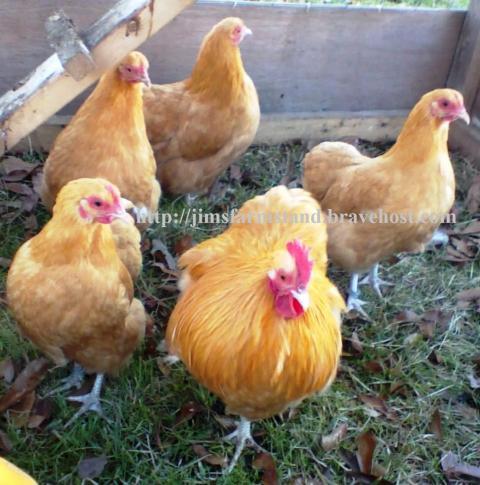
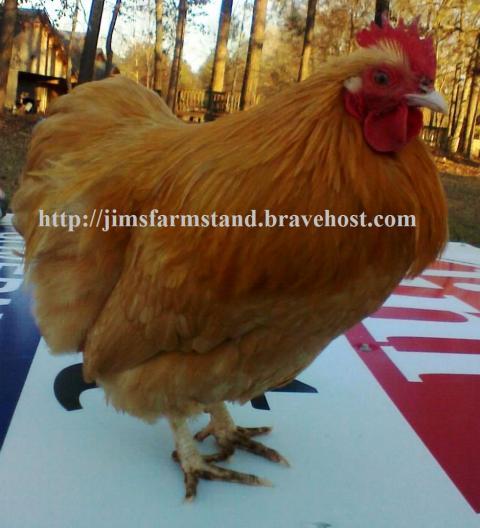
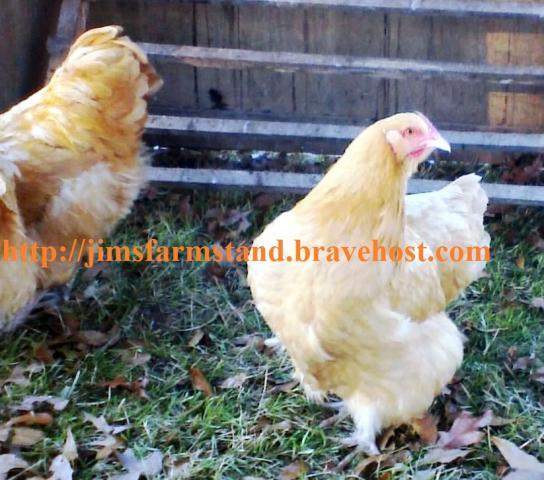
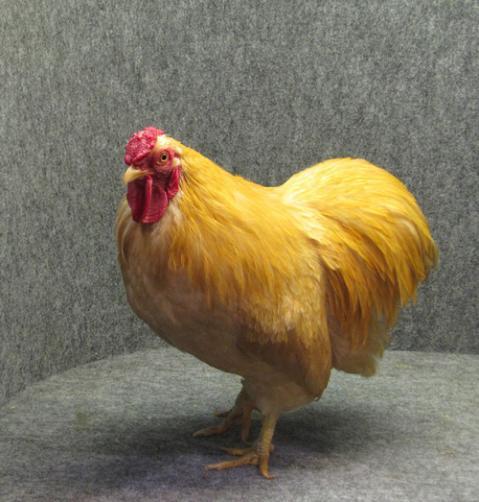
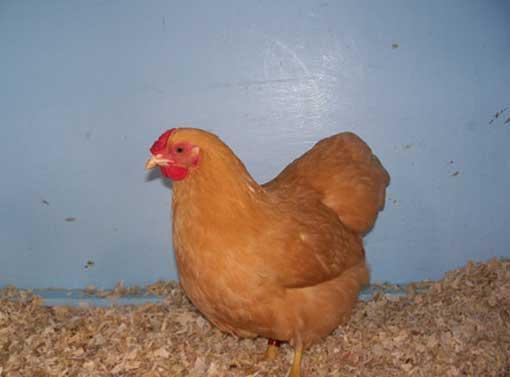
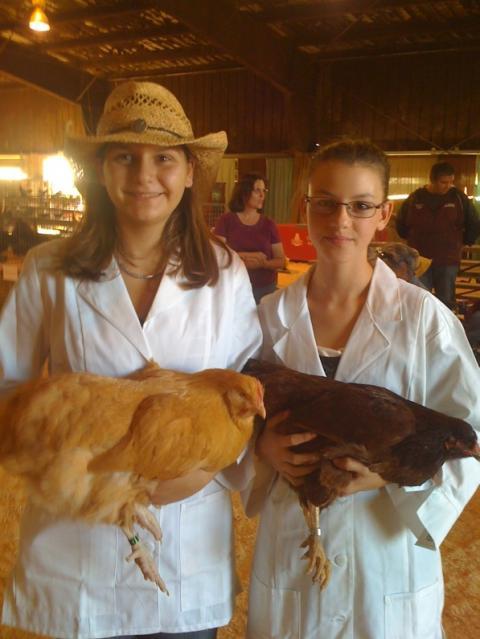
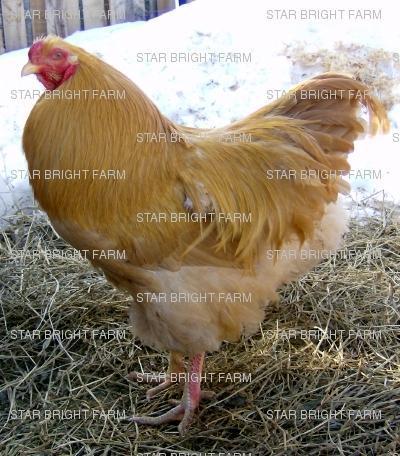
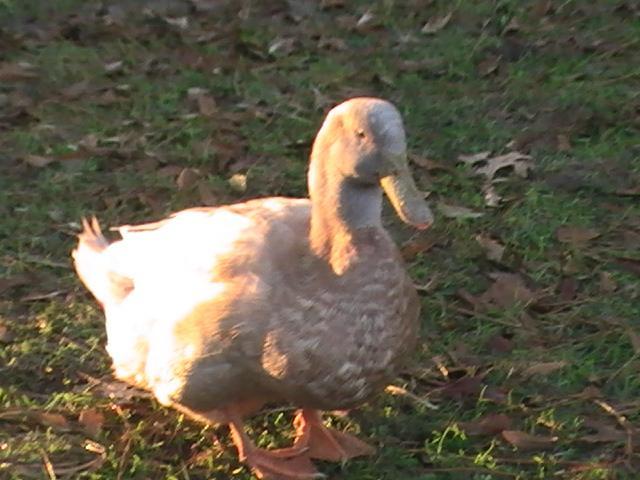
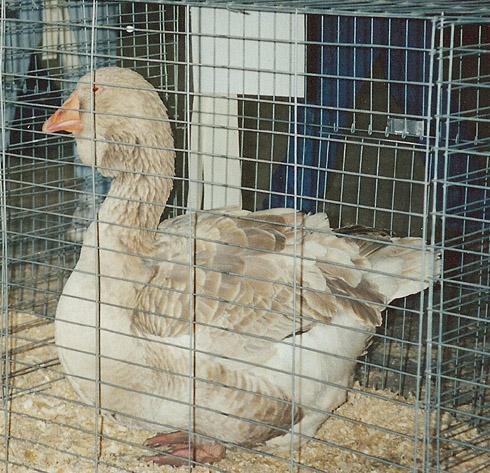
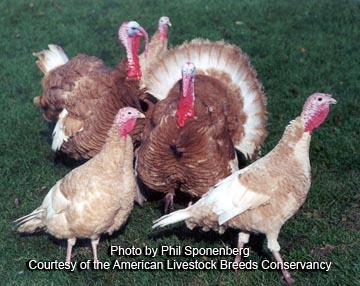
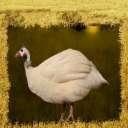
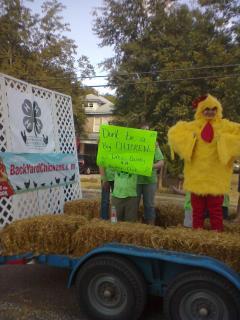
 .Buff color has been long debated ,mainly because it can vary in so many tones,which I think is mainly due to presence or lack of genes in the geneotype.If you stay somewhere in the middle range you will be okay for showing and when breeding keep a few just a bit richer/darker for some reserve color (buff tends to gradually breed lighter). The bright sun fades buff so that needs to be taken into consideration when doing an evaluation of a bird,also its age. Many buffs must be cut for being of too light of a shade and next birds can be too yellow (sometimes called brassiness in buff).
.Buff color has been long debated ,mainly because it can vary in so many tones,which I think is mainly due to presence or lack of genes in the geneotype.If you stay somewhere in the middle range you will be okay for showing and when breeding keep a few just a bit richer/darker for some reserve color (buff tends to gradually breed lighter). The bright sun fades buff so that needs to be taken into consideration when doing an evaluation of a bird,also its age. Many buffs must be cut for being of too light of a shade and next birds can be too yellow (sometimes called brassiness in buff).


